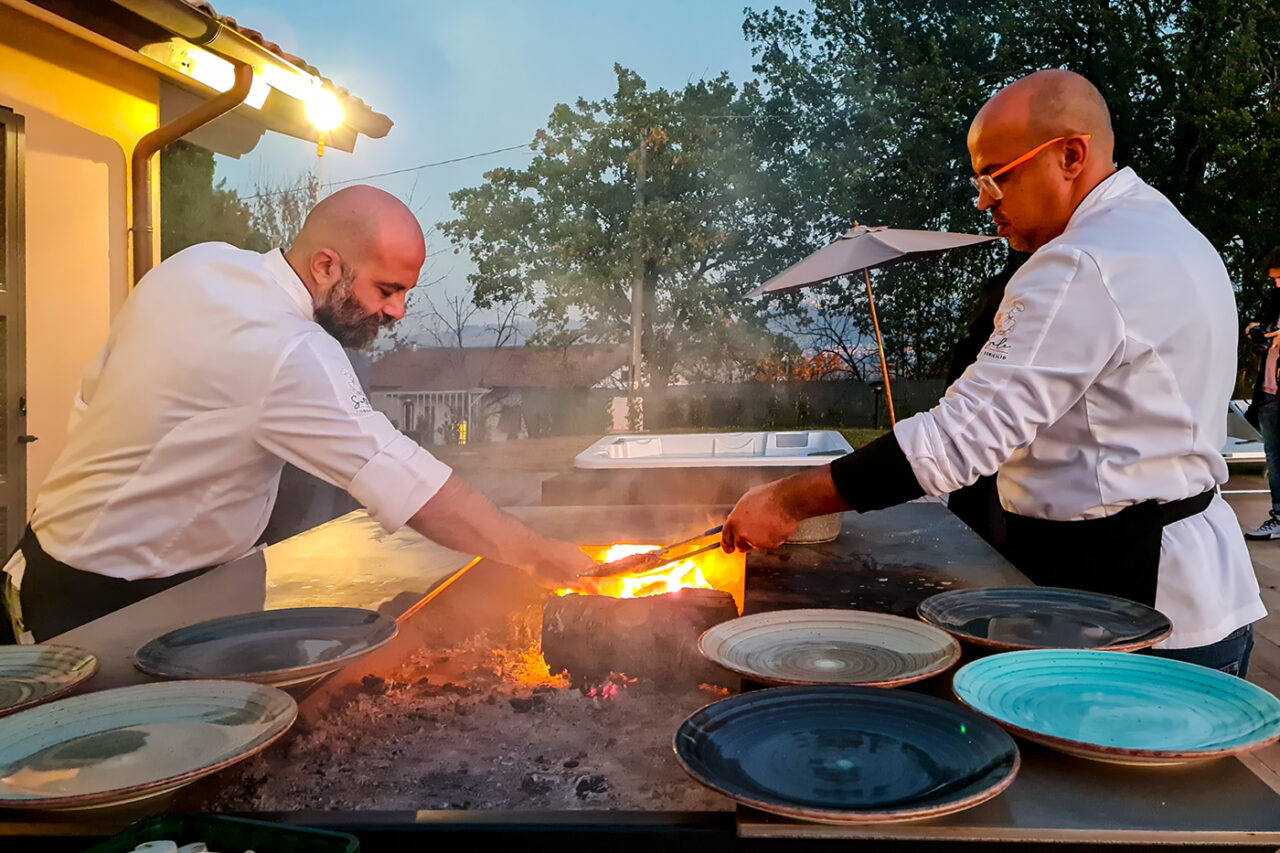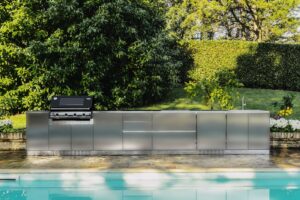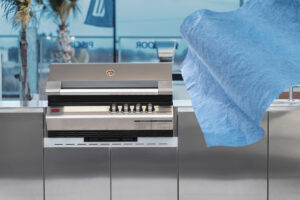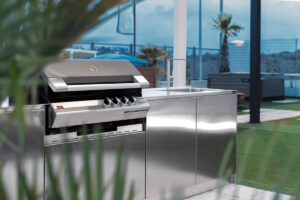The choice of an outdoor kitchen has always to do with the desire to stay outdoors as long as possible and to share moments of conviviality with relatives and friends. However, do not forget to pay close attention when deciding on one type of outdoor kitchen or another, because these are decisions that must take into account the different needs of the buyer. It is therefore essential to have a clear idea of how outdoor kitchens work and, most importantly, what their main elements are. Let’s try to understand more.
Stainless steel kitchens: the best choice
Let’s start with the material of which an outdoor kitchen is made. While in the past masonry or wooden kitchens were favoured, nowadays buyers’ preferences have decisively shifted to a much more functional, contemporary and durable material, that also lends itself to aesthetic design solutions: stainless steel. Indeed, a stainless steel outdoor kitchen guarantees great functionality and more “benefits”, including the possibility of moving it at will, the modularity and the interchangeability of components; these are usually the first good reasons for choosing this material. Moreover, stainless steel ensures a perfect sanitization of the worktops because, by nature, steel is antibacterial and easy to clean. There are models with wooden inserts, but it is mostly about aesthetics, rather than choices dictated by practical reasons. In addition, a stainless steel kitchen is absolutely durable over the years, as this metal alloy cannot be corroded neither by atmospheric agents (sun, wind, rain, salt fog) nor by salt or chlorine.
Gas or electric: the type of operation
Having said this about materials, you then need to decide what type of operation you desire for your outdoor kitchen. If you want great practicality and that each element is independent of the other, you should opt for a kitchen with a gas barbecue. If, instead, you have the possibility of connecting the power grid of the house also outside, you can choose an induction electric cooker. Lovers of more “rustic” barbecues and intransigents of the charcoal cooking will be pleased to know that there are kitchens with professional braziers that can perfectly meet their needs
At this point, you can think about all the elements that make up an outdoor kitchen and which ones you just do not want to do without.
Elements of an outdoor kitchen
There are many elements that can make up an outdoor kitchen: from the sink to the hob, from the oven to the fridge, right up to the barbecue or wood-burning brazier. The choice, in this case, must be made taking into account the space available, the amount of time you want to spend outdoors, the atmospheric conditions typical of the installation site, etc. Let’s start, for example, with the sink: if you do not have a lot of space and the connections with the water supply are not easy, you should opt for a tank that can hold water for the sink and that can be recharged. Same goes for the hob: if you cannot count on a connection to the power grid, you should bet everything on the BBQ (after all, the barbecue is the soul of outdoor kitchens). Moreover, the presence or absence of a fridge depends on the connection to the power grid. This can easily be replaced by a refrigerator box which uses water to cool down. As mentioned before, it is interesting to think about installing a “brazier” module for live-fire cooking which, by induction, heats the adjacent steel surface that will be used as a hob. If you are very inclined to host and organize outdoor barbecues, you can choice a barbecue and a grill (the former, however, requires more space), while the brazier is for those who have a slightly larger area and want to devote time to a more evocative cooking.






